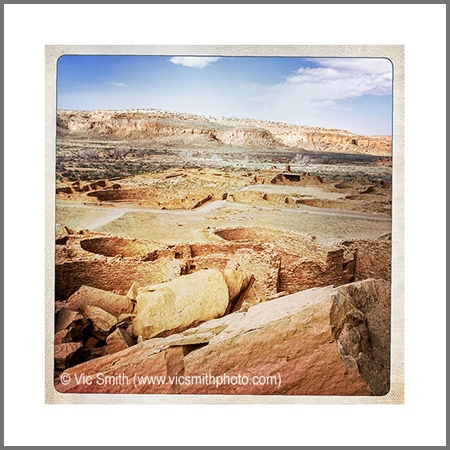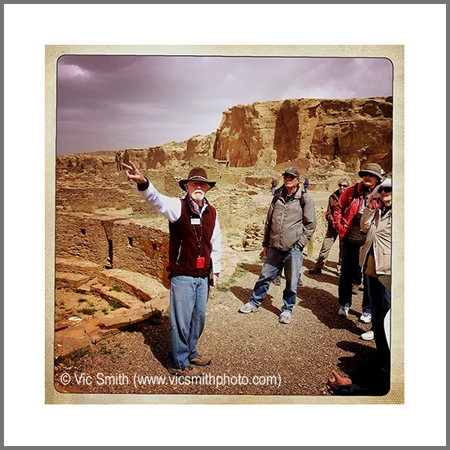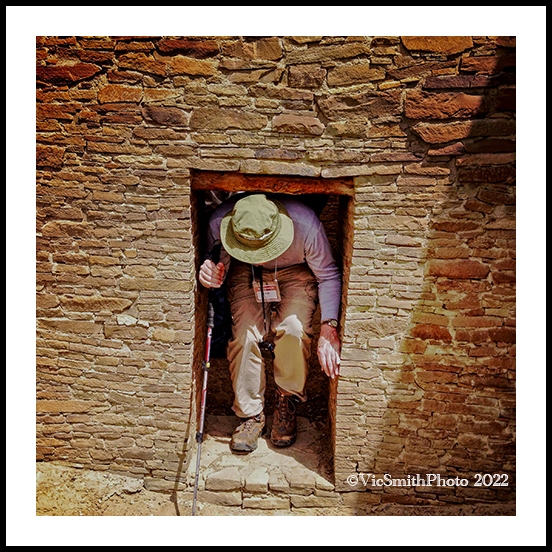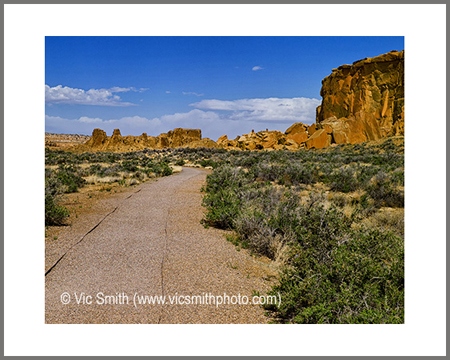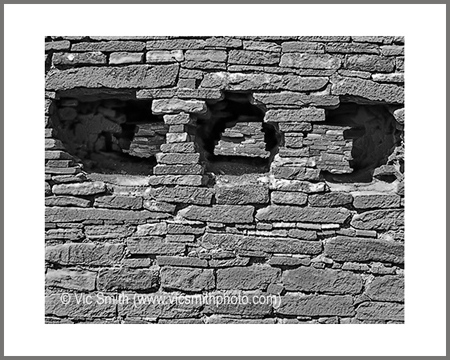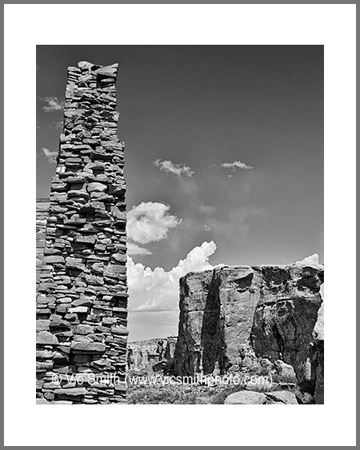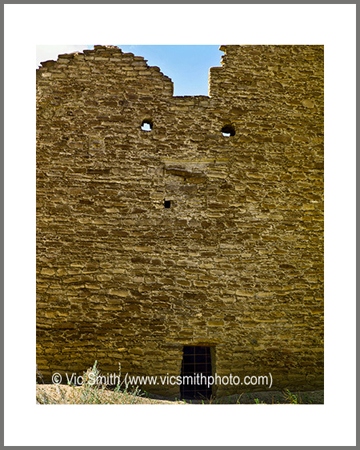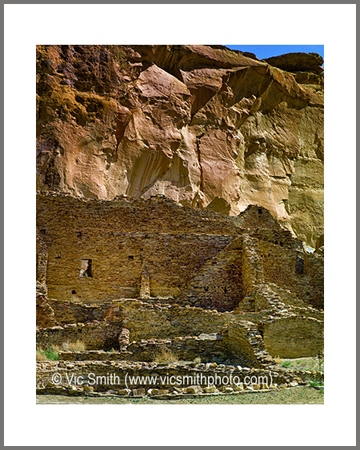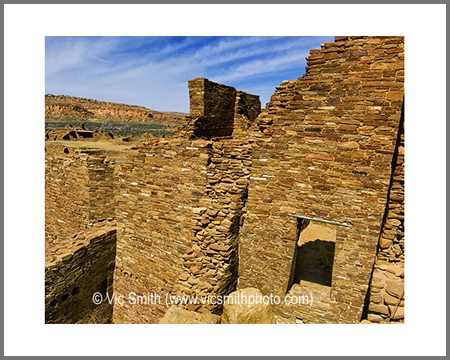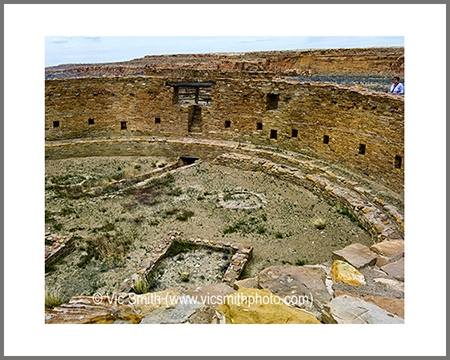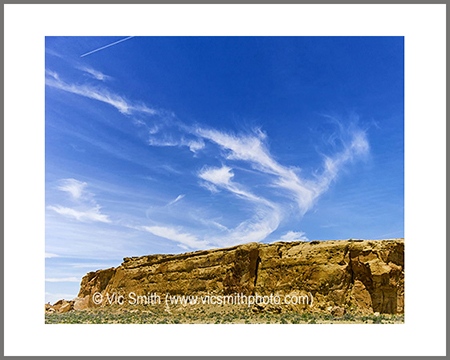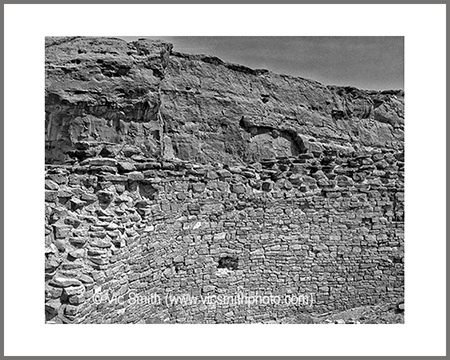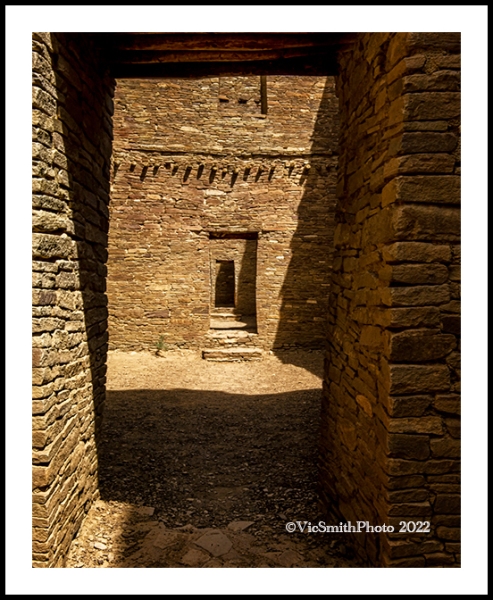Part 1: Finding Our Way
Ten of us, nine intrepid visitors and me, their driver and guide, are venturing along in a nondescript white van. There is another such group in another such van just in front of us. We’ve been working to understand something more of the Southwest and it native peoples and this is our last day on the road.
America’s relationship with these folks has always been ambivalent. They are just like us, people trying to find their way in their world. But we’ve often not known how to understand them, regarding them as rescuer, enemy, threat, buffoon, artisan or savior, depending on our agenda. Today all that is set aside; they are mentors. What we’ve seen so far on this journey are people who are part of long, proud traditions, dating back a thousand years; —people eager to share those proud traditions.
We’ll be driving into the world of their ancestors, seeing their past, and better understanding their, and perhaps our, present. We woke up in Gallup, New Mexico, and are headed toward the center of the remote San Juan Basin. We are going to Chaco Culture National Historical Park. My people have come from busy lives, some have studied the suggested resources and all have sat through the presentations. This trip has been a working vacation for them; they are tired but know that this will be the highlight of the trip.
My situation is different. They are paying for the trip. I am being paid to be involved. Lucky for me, I’m in the right place at the right time with the right interests. I’ve found road trips to be enlivening; escapes from Monday mornings. The Colorado Plateau, the locale of my responsibilities, is a marvelous escape place. It motivates me to grow and to learn. History? Geology? Paleontology? Archaeology? Ethnology? Art? Check on all accounts. Talented, creative people? You bet. All this has entered into my bones and now permeate my being. So going on trips like this is like taking a practicum in eating wonderful foods. I can feast on the best. I spend plenty of time the ordinary, so thank God I have these times to soar.
We’ve crossed the Continental Divide twice. We’ve had a fleeting glimpse of a Chaco “outlier” (a structure influenced by Chaco culture but not in the immediate bounds of Chaco), Kin Ya’a
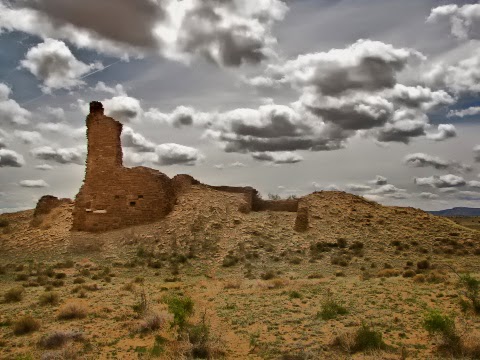
(Navajo for “Tall House”).
We’ve stopped for coffee and donuts, universal road food, in Crownpoint and are about to reach the intersection of New Mexico 57 and Indian Route 9, the southern start of the mythologized “Chaco Road” when we see the brown NPS sign that greets visitors.
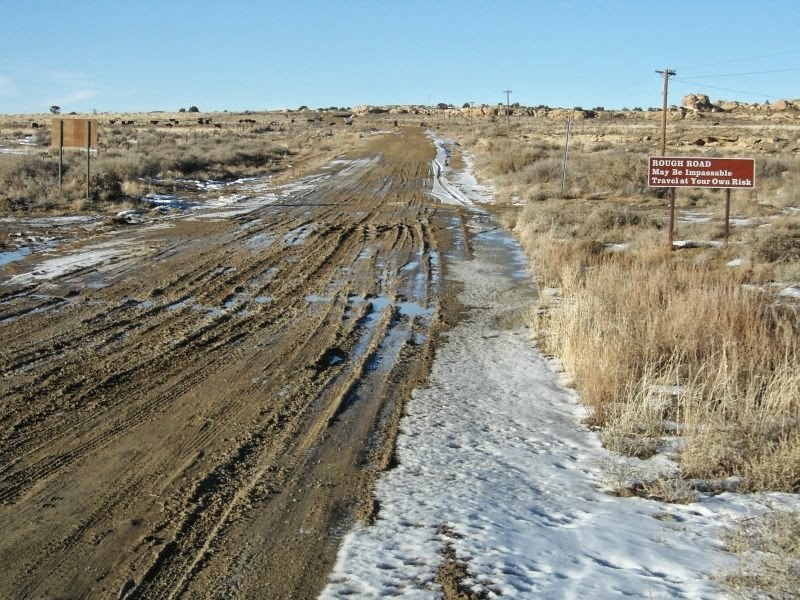
My front seat navigator asks, “How far and how long?”
Not far in, someone else asks, “How much longer?” I start calling out the miles. Of course the people in the back can’t really hear me. Later I point and say, much louder, “There, see that? That’s Fajada Butte”. Some of my passengers, the readers, know that’s good news.Below that landmark lies the Chaco visitor center.
I say: “18 miles, 35 minutes of adventure”. What I don’t say is that the 18 dry (thank God!) miles consist of dirt, rocks, ruts, slips, craggy cattle guards, sand, blind hills and bends, maybe cattle, maybe antelope, and maybe snakes, always the dust of the lead van, and an numbing cacophony of rattles and rumbles, a witches brew for the timid.
Not far in, someone else asks, “How Much Longer?”; I start calling out the miles. Of course the people back past the middle can’t really hear me. Later I point and say, much louder, “there, see that? That’s Fajada Butte”. Some of my passengers, the readers, know that is good news.Below that landmark lies the Chaco Visitor Center and the promise of smooth pavement.My throat is dry, my neck is stiff, my hands tingly and my knees need straightening; they must feel the same.
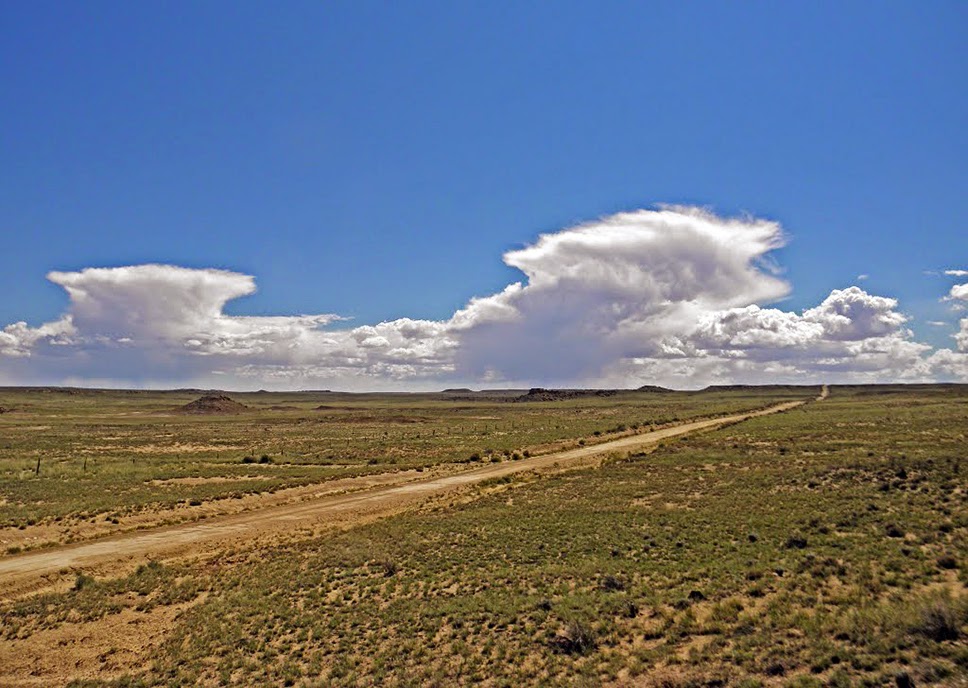
My throat is dry, my neck is stiff, my hands tingly and my knees are cramped; my passengers must feel the same challenges. As we reach the National Park Service pavement, the noise and tumult dissipate and the van collectively heaves a sigh of relief. We’ve made it; we’ve crossed the desert. The Chaco road isn’t the worst road we could face, but it surely tests our desire to have come to this desert capital, the remote center of the Chaco world.
Yet people have come, crossing the desert to see the ancient capital mostly buried by invading seas of sand and silt. Puebloan folks have used it for ancestral re-enactments. Spanish settlers from Mexico and Navajo have used it for building materials and grazing. It has been on the American map for a century and a half, since James Simpson led an expedition and Richard Kern sketched what they saw. His sketch of Pueblo Bonito, Chaco’s largest structure, showed magnificence that could only be imagined at the time. The trader Richard Wetherill opened a trading post at its heart in the late nineteenth century, began its excavation, and even tried to gain title to parts of it.
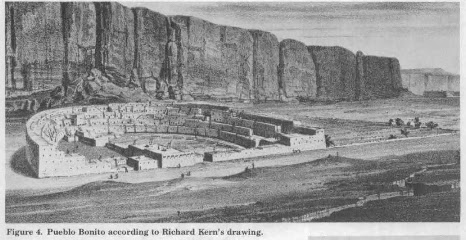
Now important parts of it have been excavated and eighty thousand people visit per year, most in and out in one day, fascinated by these this ancient people and their legacy. Identity can be a fickle companion, so maybe slipping into a mythical one, like “Chacoan”, can be easier, and maybe putting our bootprints next to their much older sandal prints can help us join in their sense of being centered. Although I’ve been to Chaco before, most of my people are first-timers. I can sense their anticipation and I know we all feel a mystical connection with this place.
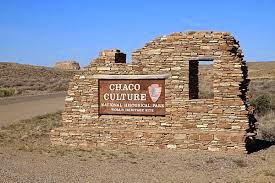
Driving into Chaco, I don’t see any grand earthen shapes— no dramatic layers; no reds, creams, yellows, purples, and whites formed into thrones, domes, reefs, needles, temples, and nipples; no grand romantic vistas like those found in the postcard parks of Utah and Arizona. I see a flat valley running mostly east-west. The road drops down and crosses over Chaco Wash, a deeply incised arroyo that starts to the east and ends to the west, at the Chaco River, six miles away. Both are dry except for snowmelt or flash flood water. Above the valley, I see cliffs rising to the tops of mesas, dull cream-colored sandstone similar to that in Mesa Verde, topped with courser sandstone sheets.
This valley is in a hard land, stark, with little vegetation and little evidence of water (except for the water tank on the cliff above the upcoming visitor center). The elevation is high, six thousand feet, the climate is extreme, even for this corner of New Mexico, ranging from -38°F cold to 120°F hot. The average rainfall is but eight inches. I’m tempted to roll down the window, but I know the breeze is dry and carries clouds of silt lifted from the clay soil, clouds that make even the distance look hazy. It seems to suck moisture from me. Early American visitors found that even the Navajo refused to enter this valley during the hard seasons, hot and cold, refusing to cross what was called the “the desert barrier”.
Yet ancestral puebloan peoples managed to break through that barrier. They combined knowledge of the land and the weather with human ingenuity, creating magnificent structures that became a capital—a place we can admire and respect; a library lined with resources of knowledge, wisdom, and caution. They set the stage for modern Pueblo peoples and our visit today.
And then we arrive at the visitor center. I open the doors and put the step stool into place. My people exit into the big sky country of Chaco and head for the visitor facilities. We have come a ways back, but we are just beginning, really.
Part 2: At The Center
The visitor center is small yet still provides a helpful staff, books and other learning materials, comfortable chairs, water, and isolation from the outside wind. As I walk about the exhibits, I find new stories, adding them to what I’ve learned on prior visits. They come alive as I look out the windows to the wider park paths.
Against a section of north wall is a relief map, showing many of the sites within the park boundaries. It provides a raven’s eye view that is helpful for orientation but tends to reduce the scale of what was built at Chaco, the amount of activity and time required to build it, and the influence that these buildings had throughout the region.
Ancestral Puebloan peoples built small communal villages at Chaco two thousand years ago. Larger building projects started around 500 AD. and reached a crescendo from 850 AD to 1150 AD, a three hundred year span, and then fell rapidly into disuse. What they built during the boom times, the great houses, were crucial to the those ancestral peoples and they still reverberate in our time. They are what defines the “Chaco Phenomenon” and are what my folks and I have come to see.
Now it is time to see the real Chaco and listen to what it has to say to us. Before I usher the visitors out of the visitor center, though, I think on how understanding names can start to unlock the nature of a place. Consider, for example, Point Sublime in the Grand Canyon. What did geologist Clarence Dutton see when he stood there the first time? He must have been thrilled, given the value of that word during his time.
Knowing that Chaco has been an attraction for many years, it seem logical the the name would similarly mean great things. Unfortunately no, the name actually comes to us from a path now veiled. We know that the Hopi call it yupköyvi, “the place beyond the horizon”, the Acoma call it W’aasfba shak’a, “the place of greasewood” and other Pueblo peoples have their own names. Modern Navajo have a name meaning “the meeting place.” The name we’ve chosen to use, Chaco, could have been shortened from the Acoma name or derived from a Spanish translation of the Navajo word Tskoh, meaning “rock-cut” or “canyon” or Tzak aih, meaning “white string of rocks.” In general, the word, chaco, is used in the Americas to describe flat, dry, treeless plains. We’ve no idea what the original Chacoans called their home place.
The question of naming is further confused as we head for Pueblo Bonito, a Spanish name. I find it ironic that an iconic locale, Chaco, for an iconic people, Ancestral Puebloan, is now described using languages foreign to Chaco’s original time and place. The site names found in the park are Spanish (Chaco, Pueblo Bonito), Navajo (Kin Kletso), mangled Hopi (Hungo Pavi), and English (Chaco Culture National Historical Park). Even the label “Pueblo” is Spanish. Today the Chacoan descendants, the peoples of the Pueblo cultures, speak six different languages in four different language families, and there’s no reason to believe that the Chacoan situation was any simpler. Yet we don’t use any of these people’s languages to describe this iconic place.
We’re back in the van and driving toward Pueblo Bonito, the best known and most studied of Chaco’s “Great Houses”, so named because of their scale. On the way, we’ll pass three more of them, Una Vida, Hungo Pavi, and Chetro Ketl, in a short distance. There are six on this side of the wash and on the other side is Casa Rinconada, a great kiva, a large version of the round structure used the ancestral puebloan world to host key religious and civil functions. In all there are more than thirty recognized sites within the park. We are in “downtown Chaco”, the center of all the sites, the center of the center.
Pueblo Bonito can tell the story for all of these sites. So my passengers and I exit the vans and start along the short trail to visit it. The structure grows in size as I walk toward the southeast side, the wall getting taller with each stride. If I’d been moving through here a hundred years ago, I would have seen a few short walls rising in front of me. The rest of what is seen now would have been buried in pools of sand and silt. Little of its story would have been visually evident. Since then much of the pool has been drained and its contents risen again. As the invading land was moved out, high walls rose around a single large outline. Researchers have collected stories and artifacts. From them numbered viewpoints have been established and explained in a readily available trail pamphlet.
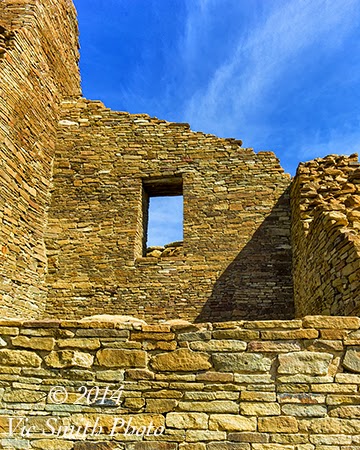
The trail continues on the east side along a wall with empty roof timber holes. Then it climbs up and over blocks of cliff sandstone that broke free from the cliff wall in 1941 and rolled into the back side of the structure, it’s masonry under attack from the rock of the cliff from whence it had come. I follow the trail past the tall remnant of the back wall, still standing after nine hundred years, and then into one of the plazas. I stop in this plaza for a bit, listening. The wind blows earth around, short shrubs sway, a stray paper bounces into a wall and stops. None of this produces much sound, but it seems to fill the open space.
Chacoans lived and worked here—not to build someplace for us to visit but to make their lives better. They no longer remain to hang out, selling handiwork, and they can’t pass out guidebooks. But they have left clues, pieces of their lives, to tease us with snippets of their story.
Pueblo Bonito gradually awakens in me a sense of ongoing life. I see doors and wonder if someone might emerge at any moment or if residents may be watching me, wondering what I want, ready to challenge me. I sense the sounds and maybe the smells of former lives—of religious leaders chanting, drumming, and dancing in kivas and plazas, clad in shells, parrot feathers, and turquoise, working to hasten the appearance of life-giving rain in this arid land; of pots clattering, corn being ground; of children running; of trading stalls and negotiations carried out in multiple languages; of ravens sneaking goodies, of construction for walls, roofs, pits, earthworks, and canals; of people who left a part of themselves behind to keep their campsite alive.
I have a similar sense when I return to my childhood home. Seeing the house brings back memories of events that still seem real: playing catch in the front yard, washing my father’s red work pickup after a camping trip to the desert, growing vegetables in the back yard, eating a Sunday meal outside on the driveway, driving along the street on the day that John Kennedy was shot, and many more. These sensations are real. But they are generational. The sense that I get from Chaco is much more expansive and powerful, a bit of the eternal kept alive.
As I turn around, I hear real drums, rattles, and monotone voices off in the distance, calling out a ritual story. Zuni people have returned to their sacred site to celebrate their Buffalo Dance. The dancers are likely descendants of Chaco. On another day, they could also be from Acoma, Hopi or other Pueblo peoples come to tell of their ancestors’ migrations, of campsites in both Chaco and then Mesa Verde, important places that preceded their modern village sites. They tell stories at the heart of their Pueblo life. They don’t tell us all; the mystery remains.
Some understandings are sensitive and can’t be told. But there is still much to be learned, if we are sensitive and patient. I’m told that an archaeologist was struggling to understand a kiva configuration: why are there two halves? Finally, he went to a leader of one of the Pueblos and asked for help. The leader simply said, that one side is for summer people and the other for winter people, a sharing of governance still maintained in these cultures.
Stories are told because they help people make sense of the world. They relate truth and stick to us like cockleburs. Truth doesn’t have to be scientifically rigourous; but it must be life-giving.
Of course, there are stories from folks who have studied Chaco from a scientific standpoint. These are the folks who’ve mapped, dug, sifted, categorized, and synthesized the results for over one hundred years and especially since the 1970s. Like so many other southwestern Native American sites, Chaco has been extensively raided over the years, artifacts pilfered and structures destroyed. The roof beams have been used to construct new buildings or just burned for firewood. The pots have been sent to the collections of individuals or museums, or just put on a local shelf. Against the odds, archaeologists have still managed to synthesize stories and theories. Large amounts of research money has been spent and and significant professional conflicts have resulted. Now we have more stories, some generally accepted, others not so much.
So Chaco can and does give us stories, if we are quiet and listen. When we hear them, we must remember to treat them in the context of all that we know. Sometimes stories turn out to have been insightful and other times they turn out to have been outageous. There isn’t always an abundance of evidence and at times it seems to conflict with other evidence. Humility, caution and a willingness to say “I don’t know” are the best approach.
The trail continues on the east side along a wall with empty roof timber holes. Then it climbs up and over blocks of cliff sandstone that broke free from the cliff wall in 1941 and rolled into the back side of the structure, it’s masonry under attack from the rock of the cliff from whence it had come. I follow the trail past the tall remnant of the back wall, still standing after nine hundred years, and then into one of the plazas. I stop in this plaza for a bit, listening. The wind blows earth around, short shrubs sway, a stray paper bounces into a wall and stops. None of this produces much sound, but it seems to fill the open space.
Pueblo Bonito’s stories also arise from its physicality. It is a place of staggering scale, especially by ancestral standards. It reminds me how big the world is and how small I am in it. As I walk up the trail toward it I can see its expanse along the wash and toward the cliff rising above it. It is a single structure occupying two and a half acres, one hundred and nine thousand square feet. And don’t forget that this was one of several such structures.
On the short drive to Pueblo Bonito we passed a canyon with an earthen dam. What we didn’t see was the network of stone channels emanating from that dam. Rain falling on the hard surfaces of the northern mesa would likely flood into the canyon, down to Chaco Wash. The ancient people attempted to capture it for use on fields below. The south mesas are different, having more soil. There, little individual fields were developed, like those found in modern Pueblo lands. Farming was tough, but so were the people, tough enough to last awhile.
If the farmers and builders didn’t live in these large houses, though, who did? Looking up the five stories, I can see the remains of rooms, stacked on top of each other. Could they all be residential rooms? Doubtful. Many have no vents, not even places for cooking or heating fires. Could I live in completely bounded spaces without vents for cooking and heating fires or even visibility of the world around them? No. They appear more like storage spaces than living spaces. I’ve gone between rooms, squeezing my six-foot-plus body through doors two-thirds that size. These people weren’t tall, maybe five ft on average, and they would have had to crawl through the tiny doors in order to live in the rooms or just manage the contents.
These great houses were all likely lordly dwellings, perhaps palaces, housing maybe a few thousand people at most, some kind of elites, possibly priests, meant to visually enforce the power and importance of Chaco. They likely had large living spaces for these leaders. Many of the other rooms were probably for the storage of their regal treasures, especially large amounts piles of turquoise.
I’m told that if you stand at Pueblo Alto, on the cliffs above Pueblo Bonito, you have a better view of the Chaco world. It was large, maybe ten thousand square miles. More than two hundred sites, “outliers”, across this Chaco world show signs of Chacoan influence, from Colorado to Utah to Arizona and nearly to the Mexican border. The big three great houses seem to have been Pueblo Bonito, Chetro Ketl, and Pueblo Alto, the heart of downtown Chaco. The first was the oldest, the second the largest, but the third one, Pueblo Alto—according to later tribal accounts—was the center of power, where the supreme rulers lived and swayed. Other houses lined the north side of the wash, but they were more princely than lordly.
There are notably no cherry blossoms, but make no mistake, this was a capital. It was a place meant to humble and reinforce a belief in the necessity of power and its accoutrements. It was a place to embody the wide sway of the elites that it housed.
Why did Chaco elites need this sway? Perhaps survival. People needed food, the ability to trade goods, safety, communication, and an enabling ritual story. Chaco provided all of them. It was likely a large food bank meant to help folks ride out the storms of scarcity caused by weather, conflict, and bad luck. It was also a place of trading. Merchants from Mexico to Colorado, California to Texas likely congregated multilingually at Chaco to provide both commoners and elites with what they needed to maintain their place in the Chaco cosmos. It was also a place of security. As threats impinged from east, north, west, and south, the “Pax Chaco”—like the “Pax Romana” of the Roman empire— kept the Chaco world humming along. To do all this required a communication system. Roads, signal sites, and runners were needed.
All these needs likely also required a ritualistic foundation. Walking in the great houses, one would likely have smelled incense and heard chanting and drumming arising from the kivas, great and modest. “God is with us, keep the faith,” they might have been saying.
Great houses were monumental, new things. They were not, as had been normal building practice of ancestors, glue-on extensions over time. They were purposefully designed, engineered and implemented by people who had a purpose in mind the whole time, people who weren’t going anywhere, people who were building a new center for a Chaco world, people building a capital for monumental purposes, people building a center to hold the Chaco world together.
Ancestral Pueblo traditions centered around a story of emergence up into this world from another earlier world, followed by migrations and returns of from large distances, from Central America and even the tip of South America. As agriculture moved north from central America, they became less migratory. Farming required the allocation and maintenance of static land, the collection and generation of seeds for future crops and to carry folks over through lean times. As populations increased, villages became larger and more permanent. Yet climate patterns were still uncertain and resource overuse still a problem, so migrations occurred even among these more sedentary folks, sometimes after only a generation or two.
There is still the belief among modern Pueblo peoples that migration was central to their heritage. Villages are to be seen as more campsites than destinations. Looking back these peoples believe even Chaco was such a place. They know that their people moved on to other sites before arriving at their current locations. As grand as Chaco was, it was also changing.
Part 3: And Then?
Over my visits to this land, I’ve started to understand the Chaco phenomenon and hope I that my people are starting to do the same. There is more to see, but we must go. The day has been full. Our skin is showing the effects of bright western sun, walking at a six-thousand-foot elevation, and silty gusts. But Chaco is a moody land, often allowing access, but always on its own terms. The trip out is just as challenging as the one in—even more so when the conditions shift.
I’ve tried the road when it was slimy wet, lining the wheel wells with caked clay. And I’ve had a flat tire as evening and a likely rainstorm approached, when I spent an hour crawling in the dust and dirt to work bolts and watch the concerned faces of my passengers. Getting stuck in the San Juan Basin can be dangerous: cold, hot, slick. Snakes and other prickly things can threaten. Time to drive. Isn’t it ironic that this place that took hundreds of years to so carefully build keeps visits so short? Chaco preserves it own mystery.
Similarly, the Chacoan people had to leave at some point, and they seemed to have done so quickly.The boom times gave us the Great Houses, but after their peak, Chaco rapidly fell into disuse. What happened? After taking the time to painstakingly build this greatness, why was it abruptly left? Why did the stories change?
We know that regional factors were at play at the end of Chaco’s dominance. Resource depletion likely occurred. Populations in the latter Chacoan days had increased, putting more pressure on the web of life. An extreme drought, lasting for fifty years, starting in 1130 AD, likely played havoc with the vulnerable parts of the Chaco web. This could have increased instabilities and weakened the Pax Chaco. While Chaco populations were decreasing, those in other areas were increasing. People were migrating to new places. A perfect storm was blowing and the Chacoan ship of state was coming apart.
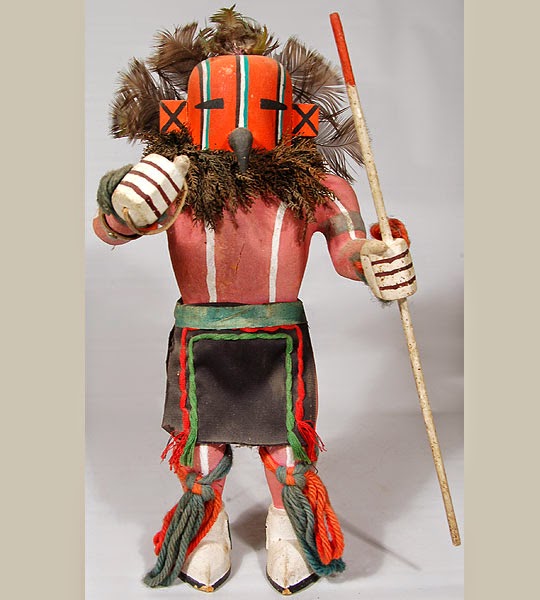
The regional factors were external. There are also legends, told still today among the native peoples, about the end time for Chacoan dominance. It is a kind of morality play that speak against the concentration of power and the degradations that it can produce. It seems that there was a strong figure, a gambler, who appeared on the scene, possibly occupying Pueblo Alto, and quickly managed to enslave the people. To the Hopi, he was Hasoqata, a wicked, merciless, magical figure who targeted women. To the Navajo, it was Noquoilpi, He-Who-Wins-You-Over. He took their property, their wealth, and their children. He likely turned neighbor against neighbor. Eventually it is said he caused the collapse of Chaco.
What lessons were learned? Listen to the words of two modern descendants, first a man from Laguna Pueblo in New Mexico:
“In our history we talk of things that occurred a long time ago, of people who had enormous amounts of power: spiritual power and power over people.
I think that those kinds of people lived here in Chaco…Here at Chaco there were very powerful people who had a lot of spiritual power, and these people probably used their power in ways that caused things to change and that may have been one of the reasons why the migrations were set to start again, was because these people were causing changes that were never meant to occur…There are some things in our migration histories that we don’t understand, but I think that some of those things were never meant to be understood. They served a purpose when they were needed and now that purpose is, or that need is no longer there. It’s no longer necessary to repeat that portion of the story.” (Lekson, Stephen H. A History of the Ancient Southwest, 199)
A woman from Santa Clara Pueblo, also in New Mexico, adds to the subject:
“[Chaco was] full of energy, a different energy that before or after…a hierarchical structure: it was the idea of Pueblo society that we know today, where everybody is equal…a different ideology.” (Lekson, Stephen H. A History of the Ancient Southwest, 199)
Pueblo people today don’t build palaces and they resist elites. They have been at the living of their lives for over a thousand years, and they’ve learned about what is important to them. Shared governance is to them much better than establishing elites. They’ve learned what has and what has not worked. To these folks, Chaco was an important campsite on their migratory path. Then there were problems and it was time to move on, learning and seeking new remedies which were perhaps actually old remedies. It was time for them to follow the clouds to new places, to rethink their solutions, and to build new ways. Pueblo people don’t shun Chaco. They embrace it, and they have learned from it.
Now I’m back in Gallup, my folks freed to their enjoyments. I sit on my motel bed drinking road coffee and thinking about the day. Once again, Chaco enlightens and challenges.
I started my Chaco times by driving to an isolated set of ruins in a desolate place, having no idea how special it was. I’ve learned that the structures, what many call ruins are rare great houses, carefully built, and I feel honored that they’ve been shared with me.
Chaco was a response to the needs of the time. Its fate was something that has happened to many other societies, and continues to happen. Combining economic, political, military and ritual power too closely is a dangerous practice, easily becoming a toxic witch’s brew. I will never be Puebloan, but I can understand the lessons they learned as they migrated their chosen paths. So Chaco really lives on for all of us, as a monument of achievement and of caution.
